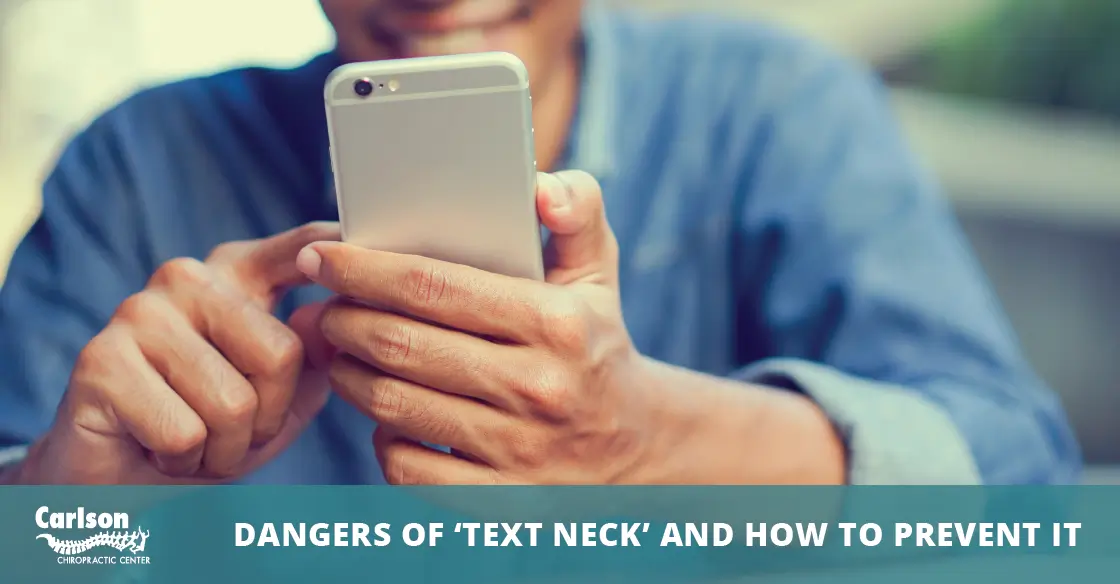Most of us can hardly recall the last time we spent a day away from a computer, smartphone, or tablet. Our younger generation may grow up not ever having that possibility. And as a growing number of Americans use their smartphones as their primary means of accessing the internet, it’s hard for a day to go by without being hunched over, neck bent, looking at a screen.
Digital Realities of Our Everyday Lives
Our days begin in a flurry, often being woken up by our smartphone alarms. We wake the kids up and manage to get them off to school, all the while, tablets, screens, and smartphones punctuate our morning routines. For many of us, a typical day at the office means long hours spent sitting at a desk. And when free time presents itself, we spend our breaks with even more time bent over a screen, text messaging friends and family, checking out the newest free games, and spending time on social media. While it may seem that these activities are harmless and even help to keep stress at bay, they can result in injuries that affect the neck and back.
Such injuries are not as harmless as we might think. Many medical professionals point to their prevalence as a new epidemic, affecting people of all ages across the U.S. and other countries. It’s hard to go anywhere these days and not take notice that at least half the people around you are peering down towards their smartphone or tablet. Eyes are drawn down, neck bent at an uncomfortable 40-degree angle, and shoulders rounded. This is the perfect position for gazing into a screen, but it often results in what experts refer to as “text neck syndrome.”
“Text neck” is, quite simply, pain in the neck and spine due to the loss of curvature in your spine in the cervical region.
This loss is a direct result of large amounts of time looking down at your smartphone or tablet. Ongoing postural stress can result in chronic neck pain with symptoms extending into the upper back and the arms.
Neck and Back Pain Spanning Age Groups
This loss in the curvature of the spine used to present in much older patients, but many health professionals are concerned to see this occurring within younger populations.
But it comes as no surprise due to the sheer amount of screen-watching that these populations engage in daily. According to a tech research firm, IDC, 79 percent of 18 to 44-year olds keep their smartphones with them an average of 22 hours per day.
The Symptoms of Text Neck
Whether you spend your days working on a computer or like playing games and texting on your smartphone, chances are you may already be suffering from “text neck” or a similar strain on your neck, shoulders, and spine.
- Upper back pain that can range from chronic, nagging pain to severe upper back spasms.
- Shoulder pain and tightness which can result in muscle spasms.
- Possible pinched cervical nerve, resulting in pain and neurological symptoms that may radiate down the arm and hand.
Preventing Screen-time Neck Pain and Back Pain
Living in the digital age is the new reality. But we shouldn’t pay for our Netflix subscriptions with our health! Below we will share some way on how to fix text neck.
A good chiropractor will tell you that much of the pain and fatigue associated with screen-time posture can be prevented. A great place to start is your workplace. Consider how your current ergonomic setup at work might be affecting your posture. By making just a few adjustments, your body will thank you! Simple changes can be incredibly useful, some text neck exercises include:
- Moving your laptop or mobile phone up to eye level.
- Taking short breaks away from screens during the day. This can limit the amount of strain you’re putting on your neck.
- Resting your forearms on a pillow while typing can help minimize neck tension.
- Investing in an external keyboard if you are smartphone-dependent in regular life and at work.
Be Smart with Your Smartphone
And speaking of that all-pervasive smartphone, we all need to use a bit of smarts as we use this incredible technology. It’s best to avoid using mobile devices while in bright sunlight because straining to see the screen leads to jutting the chin forward, shifting work from the spine to the muscles that hold up the head. And while on that long road trip, it’s best to avoid texting for long periods of time while traveling in the car.
Notice Your Posture to Avoid Smartphone Neck Pain
Becoming more mindful of your screen-watching tendencies, in general, can also work wonders and address both back pain and neck pain.
- Straighten your back and avoid bending over your smartphone or tablet from a hunched position. Sit up straight with your chest out and your shoulders back.
- Bring your phone up to eye level, which will keep your spine in the right position by raising or propping your arms up in front of your eyes so that you don’t need to look down to see the screen.
- Tuck your chin into your chest to look down rather than dropping your head forward.
Click here to see a quick demonstration of better posture that will help you maintain this curvature in your cervical spine while using your smartphone.
Persistent Problems? Seek Professional Treatment
If you find yourself continuing to struggle with neck and back pain despite your best efforts, it might be time to reach out to your chiropractic doctor for assessment. Treating any injuries with chiropractic care sooner than later is best. Schedule an appointment with us to come up with a comprehensive treatment plan. Treatment plans may include manual adjustments, massage therapy and other options to get the relief you need.
If you’re experiencing neck and back pain, please contact us today and see how chiropractic care can help you find relief.

